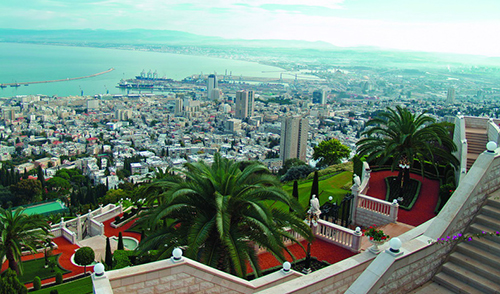

Haifa is a beautiful city located in northern Israel which offers its residents a rich quality of life. The third largest city in Israel, Haifa is on the comeback trail after having fallen into a 60-year decline following Israel’s independence in 1948.
The Early Years
During the British Mandate in pre-state Palestine from 1922 until 1948, Haifa was the country’s economic capital: It had the largest seaport in the country, plus many related businesses servicing British military requirements. However, after Israel claimed its independence in 1948, Haifa’s role diminished greatly and Tel Aviv quickly became the country’s main business center. Haifa fell into an economic and housing slump, notwithstanding that it is home to leading academic institutions such as the Technion and Haifa University.
From Blue Collar to High Tech
Haifa has always been recognized as a blue collar city due to its housing one of Israel’s two oil refineries and its port, which remains the country’s busiest passenger port and an active cargo harbor. However, Haifa has undergone a transformation from being primarily a manual labor city to being a hub of high-tech activities. It has several business parks, including the Scientific Industries Center which is the oldest business park in Israel, and is a major research and development center for many top international companies such as Intel, IBM, Microsoft, Motorola, Google, and Yahoo!
Upgrades
The city’s recently completed an infrastructure upgrade, including the opening of the Carmel Tunnels highway, which has generated economic growth and helped make the city more user-friendly. In addition, the city has a large new residential project called Ramat Hanassi. It is a new 60 dunam (15 acre) neighborhood that will accommodate 18 residential towers ranging from nine to 22 stories. Most of the staff at the academic institutions and the high-tech business parks currently don’t live in Haifa, as the housing stock has generally been rundown. By offering modern luxurious housing in an upscale community, Haifa is presenting the upwardly mobile workers opportunities to move back to the city.
Demographics
Haifa has an eclectic population: 82% of the population is Jewish, 4% is Muslim and 14% is Christian. Most of the Jewish population is secular, but the 25% of the population that is religious covers a wide religious spectrum ranging from Hasidic sects through Dati Leumi (national religious), Mesorati (Conservative), and Reform. One pocket of religious residents is located in Kiryat Shmuel, which is located in the Haifa Bay suburb commonly known as the Krayot. With a population of 6,000 people, Kiryat Shmuel provides a religious infrastructure complete with shuls, schools, mikvahs and kosher shopping. It also offers proximity to Haifa’s employment opportunities, municipal services, and retail opportunities. In step with the city’s general renewal, Kiryat Shmuel is undergoing a renaissance, and numerous residential projects are being developed in this neighborhood.
Culture
Haifa is a great family-friendly city, offering many cultural attractions to its residents, including exceptional museums such as the Hecht Museum, which houses an impressive archaeology and art collection; the Haifa Museum of Art; the National Maritime Museum, and Israel’s National Museum of Science, to name just a few. It also has wonderful outdoor attractions, including the Haifa Educational Zoo, the Carmel Beach Promenade, the Hai-Bar Nature Reserve, and the famous Baha’i Gardens.
On your next trip to Israel, try something different and spend a few days discovering the charming city of Haifa.
Gedaliah Borvick is the founder of My Israel Home (www.myisraelhome.com), a real estate agency focused on helping people from abroad buy and sell homes in Israel. To sign up for his monthly market updates, contact him at gborvick@gmail.com.
By Gedaliah Borvick










